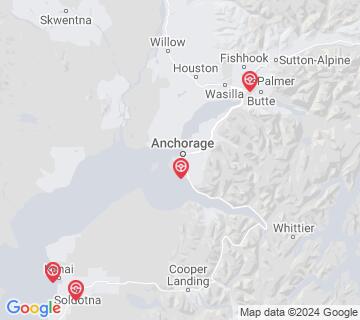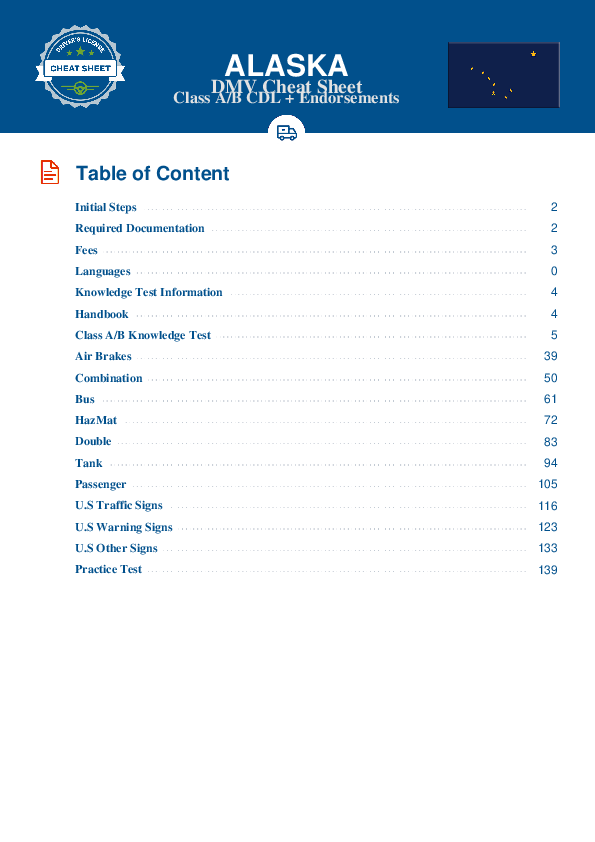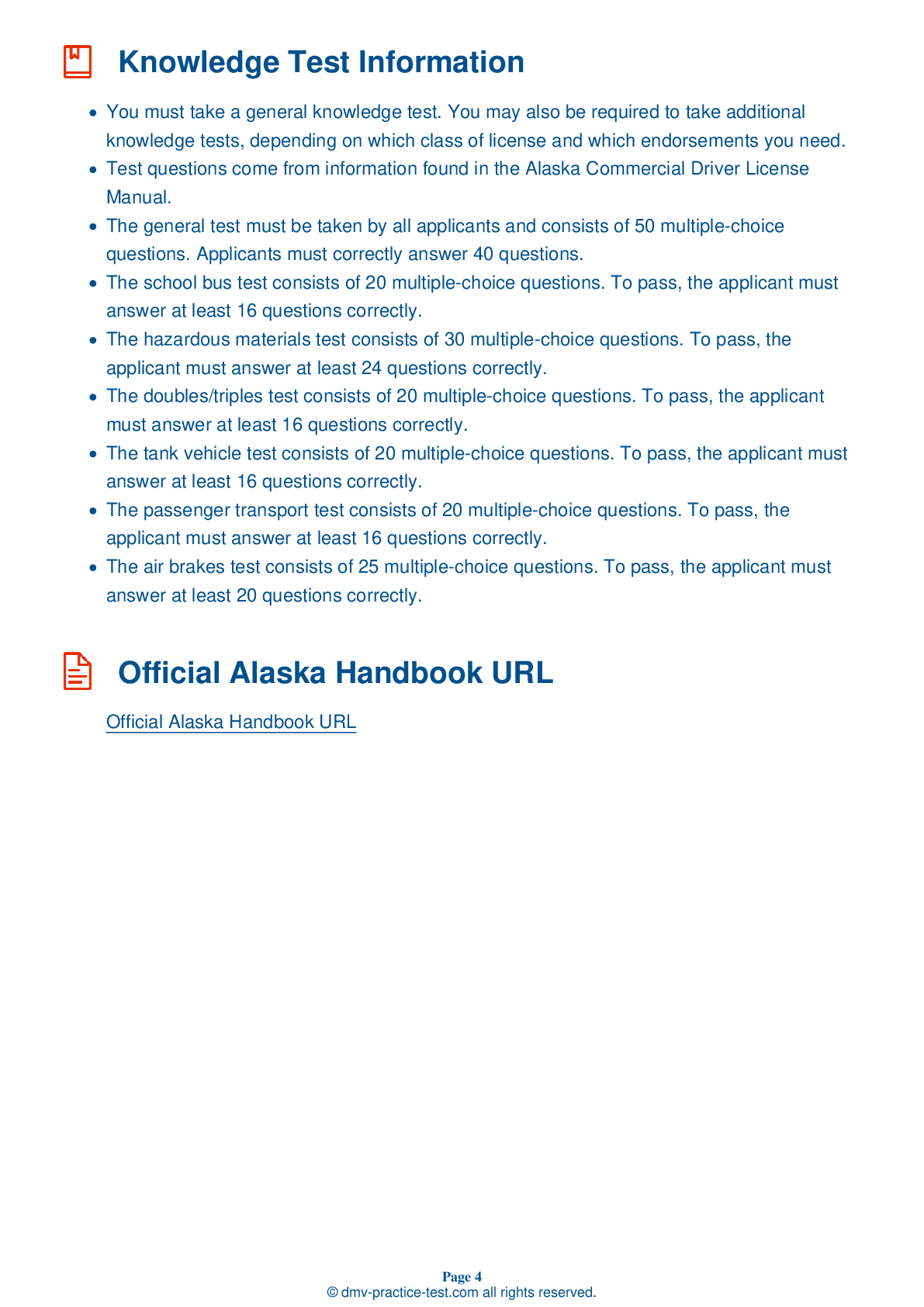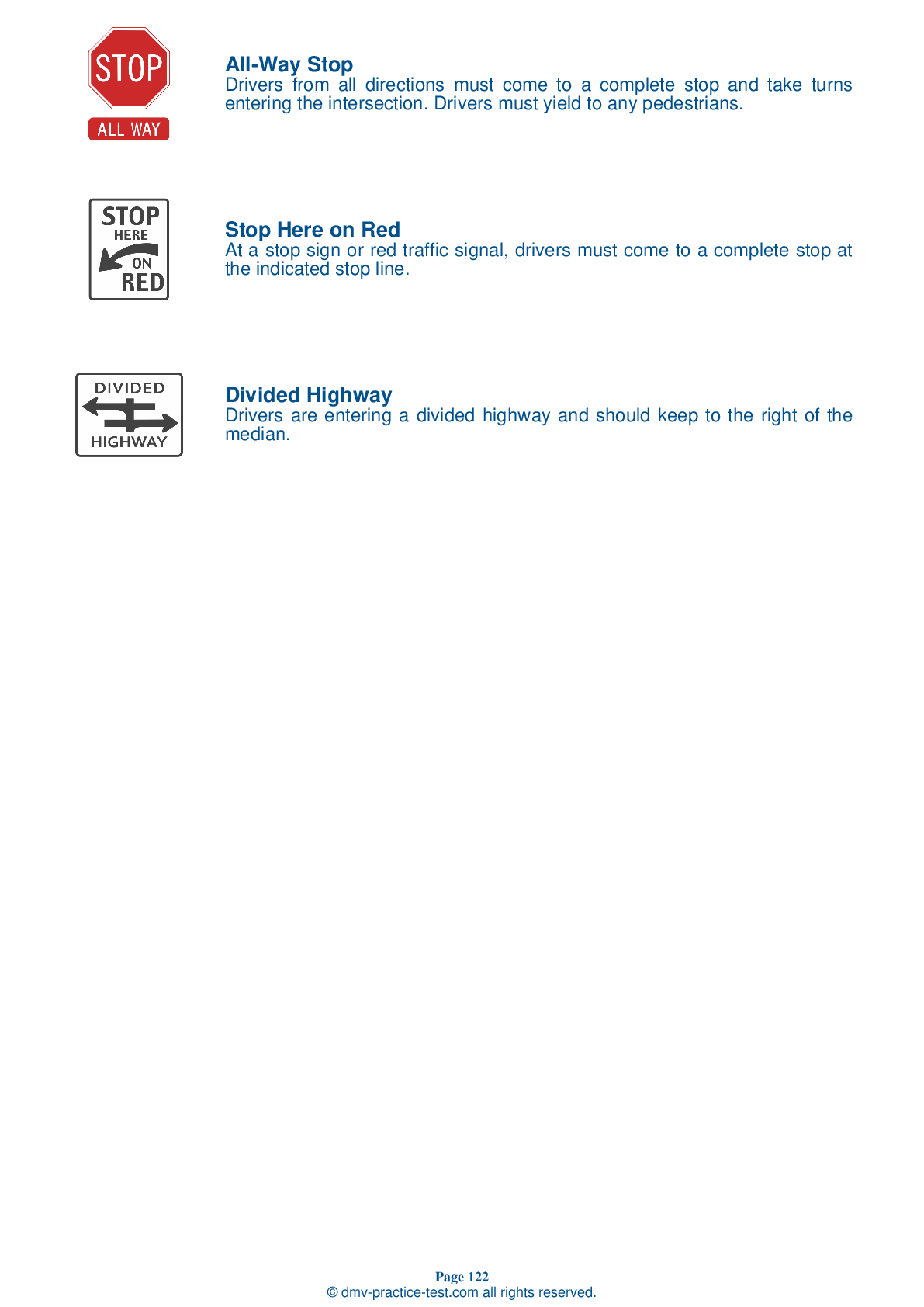Tank #1
Tank Endorsement Test | Alaska 2025 #1 Page 3 of 3
Train for FREE with our Alaska tank endorsement practice test online. The official exam test consists of several obligatory parts, with all of them checking your knowledge of different blocks of road rules. If you need to obtain a AK tank license in 2025, practice as much as possible. Free sample tests published on our website will help you check and improve your knowledge and boost your grades. Please bear in mind that DMV requirements for issuing a CDL tank vehicle endorsement may vary from state to state.
20
16
20
15 . If traveling at 55 mph on dry pavement, your minimum braking distance will be close to:
Your vehicle's stopping distance can be calculated by adding together your perception distance, your reaction distance, and your vehicle's braking distance. When traveling on dry pavement with brakes that are in good condition, your braking distance will be about 216 feet.
16 . On a shipping paper describing both hazardous and non-hazardous materials, the hazardous materials may be identified by being:
If a shipping paper includes information about both hazardous and non-hazardous materials, the hazardous items must be clearly identified on the paper. They may be entered first, highlighted in a contrasting color, or identified with an "X" placed before the shipping description.
17 . Most heavy vehicles use the ____ method when changing gears.
Most heavy vehicles with unsynchronized manual transmissions require double clutching to change gears.
18 . How can you check hydraulic brakes?
Check hydraulic brakes by pumping the brake pedal three times before applying firm pressure to the pedal for five seconds. The pedal should not move. If it does, there may be a leak or some other problem in the braking system.
19 . Hydroplaning:
If there is enough water on the road, hydroplaning can occur at speeds as low as 30 mph. It is most likely if the tires' air pressure is too low or if tires' tread is worn.
20 . If the brakes pull to one side or the other when used:
If the brakes pull to one side or the other when used, it is an indication of brake trouble.
Search the best driving school in your neighbourhood
2025 Alaska | Frequently Asked Questions
A CDL Class A license in Alaska is defined as a commercial driver's license that allows holders to operate any combination of vehicles with a Gross Vehicle Weight Rating (GVWR) of 26,001 pounds or more, provided the towed vehicle is heavier than 10,000 pounds. It typically covers vehicles like tractor-trailers, truck and trailer combinations, tank vehicles, and livestock carriers.
A Class A CDL license in Alaska allows the holder to operate vehicles such as tractor-trailers, truck and trailer combinations, flatbeds, livestock carriers, and tank vehicles. The license covers any combination of vehicles with a Gross Vehicle Weight Rating (GVWR) of 26,001 pounds or more, given the towed vehicle exceeds 10,000 pounds.
To obtain a Class A CDL license in Alaska, you must be at least 18 years old (21 for interstate driving), possess a valid driver's license, pass a vision test, and complete a written knowledge test. You're also required to pass a skills test, which includes a pre-trip vehicle inspection, a basic vehicle control test, and an on-road driving exam.
In Alaska, you must be at least 18 years old to obtain a Class A CDL for intrastate driving (within state lines). However, federal regulations require drivers to be at least 21 years old to drive commercial vehicles across state lines (interstate) or to transport hazardous materials.
While specific endorsements aren't required for a Class A CDL, they allow you to operate specialized vehicles. Endorsements include H (Hazardous Materials), N (Tank Vehicles), P (Passenger Vehicles), S (School Buses), T (Double/Triple Trailers), and X (Combination of Tank Vehicle and Hazardous Materials). Each requires an additional knowledge test, and some require a skills test.
The Class A CDL skills test in Alaska consists of three parts: a pre-trip vehicle inspection to assess your ability to determine if your vehicle is safe to drive, a basic vehicle control test to evaluate your ability to control the vehicle, and an on-road driving exam where you demonstrate your ability to safely drive the vehicle on public roads.
Yes, there are limitations for Class A CDL license holders. These include restrictions based on the driver's experience, age, health status, and specific vehicle features. For instance, drivers may have restrictions if they fail the air brake portion of the test or if they drive a vehicle without a full air brake system. Also, drivers under 21 are restricted to intrastate driving.
In Alaska, the written Class A CDL test is primarily administered in English to ensure drivers can understand road signs and signals. However, the state allows the use of translators or interpreters for those who don't speak English fluently. It's advisable to contact your local DMV office beforehand to confirm their specific policies regarding language assistance.
Yes, accommodations can be made for the Class A CDL written test in Alaska if you have a disability. You need to inform the DMV about your specific needs when scheduling your test. They can provide aids such as audio versions of the test, extra time, or quiet testing environments depending on your requirements.
Yes, if you don't pass the Class A CDL written test in Alaska, you can retake it. However, you must wait at least one day before retaking the test. The Alaska DMV allows multiple attempts, but repeated failures may require additional training or instruction before another attempt is allowed. Fees may apply for each test attempt.




